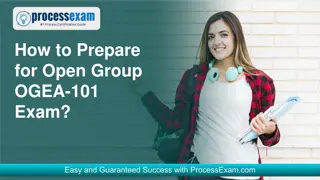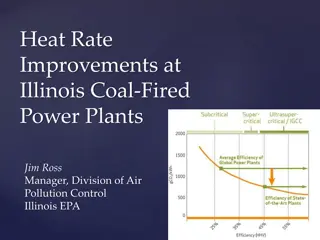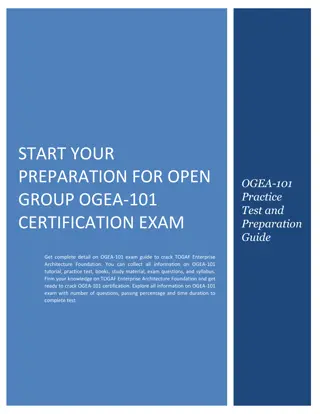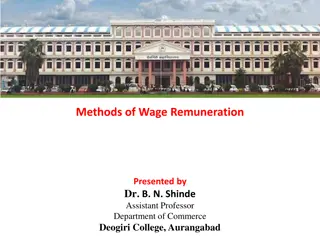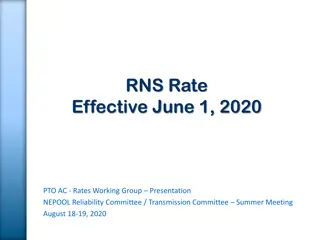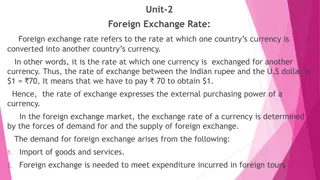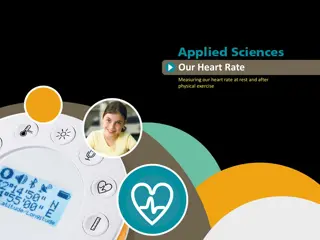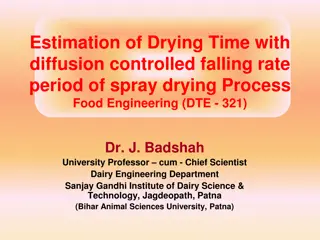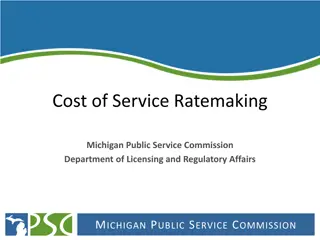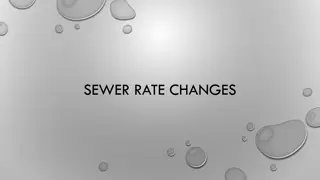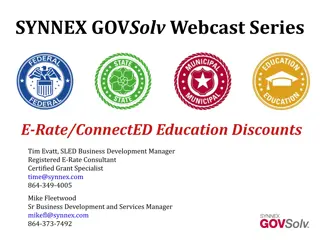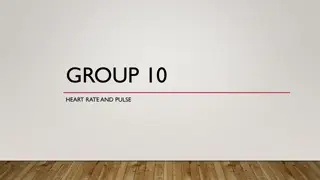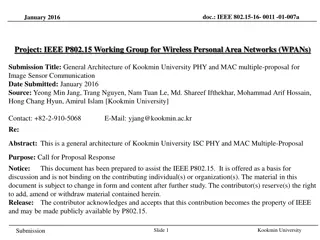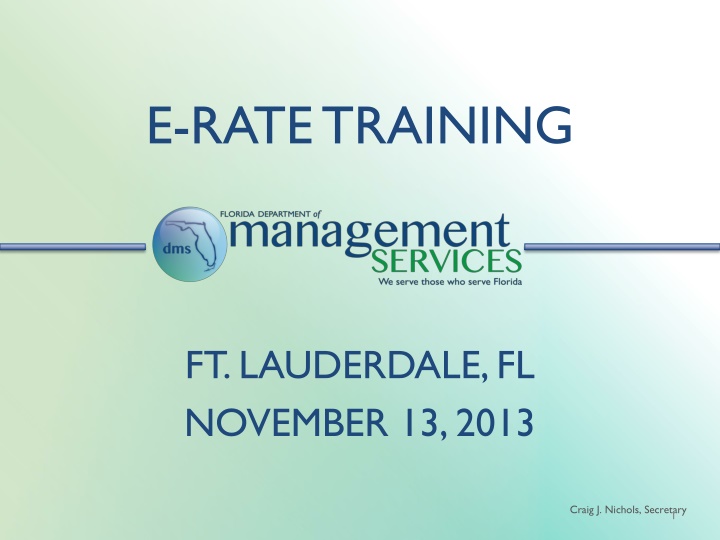
The E-Rate Program for Schools and Libraries
Explore the E-Rate program, also known as the Schools and Libraries Program, which provides affordable telecommunications and Internet access for educational institutions. Learn about its history, administration, and funding in Florida.
Download Presentation

Please find below an Image/Link to download the presentation.
The content on the website is provided AS IS for your information and personal use only. It may not be sold, licensed, or shared on other websites without obtaining consent from the author. If you encounter any issues during the download, it is possible that the publisher has removed the file from their server.
You are allowed to download the files provided on this website for personal or commercial use, subject to the condition that they are used lawfully. All files are the property of their respective owners.
The content on the website is provided AS IS for your information and personal use only. It may not be sold, licensed, or shared on other websites without obtaining consent from the author.
E N D
Presentation Transcript
E-RATE TRAINING FT. LAUDERDALE, FL NOVEMBER 13, 2013 Craig J. Nichols, Secretary 1
E-RATE101 INTRODUCTION TO THE USAC SCHOOLS & LIBRARIES PROGRAM Craig J. Nichols, Secretary 2
About the Program The universal service Schools and Libraries Program, commonly known as E-rate, helps ensure that schools and libraries can obtain telecommunications and Internet access at affordable rates. From USAC Schools & Libraries Website 3
E-rate Organizations Federal Communications Commission (FCC), an independent U.S. government agency, established and oversees the E-rate program Universal Service Administrative Company (USAC), a not-for-profit, administers the E-rate program along with three other programs Schools and Libraries Division (SLD) is the part of USAC with responsibility for E-rate 4
Overview of E-rate Program Congress directed the FCC to establish the E rate Program in 1996 Began January 1998 The FCC sets rules and policies through orders USAC develops procedures for specific actions, such as how to process applications 5
Total Awarded by Year Over Program Lifetime $3,500,000,000.00 $3,000,000,000.00 $2,500,000,000.00 $2,000,000,000.00 Florida Annual Total National Annual Totals $1,500,000,000.00 $1,000,000,000.00 $500,000,000.00 $0.00 6
Florida Funding Commitments Funding Year State Total National Total % Nat. Total SLD Reports 2013 $28,395,731.45 $1,007,525,400.19 2.8% Wave 24 2012 $121,836,638.01 $2,791,208,202.96 4.4% Wave 66 2011 $79,146,455.19 $2,628,959,307.00 3.0% Wave 102 2010 $84,328,640.53 $3,060,668,414.23 2.8% Wave 114 2009 $117,762,271.52 $2,675,197,377.03 4.4% Wave 95 2008 $87,696,446.40 $2,521,891,741.91 3.5% Wave 81 2007 $97,098,467.19 $2,419,751,226.10 4.0% Wave 81 2006 $67,964,640.67 $1,962,130,234.06 3.5% Wave 61 2005 $66,328,922.97 $2,067,600,427.53 3.2% Wave 67 2004 $62,469,016.73 $2,180,640,515.62 2.9% All Waves 2003 $65,201,616.36 $2,629,689,455.04 2.5% All Waves 2002 $55,619,854.05 $2,189,472,317.16 2.5% All Waves 2001 $56,939,963.35 $2,181,345,923.20 2.6% All Waves 2000 $58,969,309.69 $2,076,769,534.20 2.8% All Waves 1999 $91,350,429.03 $2,137,243,271.72 4.3% All Waves 1998 $49,409,144.95 $1,694,398,812.78 2.9% All Waves [Last Update: 11/06/2013] 7
Overview of E-Rate Program Timeline Commitments are made by funding year (FY), which runs from July 1 through the following June 30 USAC refers to the funding year as the year in which most services will begin, e.g., FY2013 is July 1, 2013 to June 30, 2014. 8
Overview of E-Rate Program Budget The FCC capped program funding at $2.25 billion per year, until 2010 when the FCC began to adjust the cap annually for inflation Once a year, the FCC is required to roll over all funds that are collected and are unused from prior funding years to the next full funding year FY 2013 Funding: $2.25B + $130M = $2.38B + $450M = $2.83B FY 2013 Demand: $4.986B 9
Eligible Entities Who is eligible for E-Rate funding? K-12 schools and school districts Non-traditional facilities (conditionally by state) Head Start Pre-kindergarten Adult Education Juvenile Justice State Facilities Students Facilities Students Facilities Students Yes, if part of a public school district or a stand-alone facility recognized by the state Florida Yes Yes Yes Yes Yes Yes 10
Eligible Entities Libraries and library systems Consortia groups of eligible entities that band together to aggregate demand and negotiate prices Panhandle Area Educational Consortium (PAEC) Northeast Florida Educational Consortium (NEFEC) Heartland Educational Consortium (HEC) 11
Discounts Discounts are 20 90 percent of eligible costs Discount level for a school or library depends on: I. II. Level of economic need Urban or rural location of the school or library 12
Calculating Level of Student Economic Need I. Public schools and libraries Percentage of students who are eligible for National School Lunch Program (NSLP) For a school: the school For school district: weighted average of schools in district For a library: the school district in which the library is located For a library system: average of libraries in system Private and non-traditional schools Alternative discount mechanisms II. 13
Calculating Level of Student Economic Need Applicants must obtain third party verification of economic need calculations NSLP: http://www.fldoe.org/edtech/erate/worksheets.asp Alternative Discount Method it depends Umbrella or Administrative organization State E-rate Coordinators 14
Urban/Rural Status Based on Metropolitan Statistical Area (MSA) data USAC website contains rural information by state: Urban/Rural Status 15
Discount Matrix INCOME URBAN LOCATION Discount RURAL LOCATION Discount % of students eligible for NSLP If the % eligible is... ...and you re in an URBAN area, your discount will be... 20% 40% 50% 60% 80% 90% ...and you re in a RURAL area, your discount will be... 25% 50% 60% 70% 80% 90% Less than 1% 1% to 19% 20% to 34% 35% to 49% 50% to 74% 75% to 100% 16
Eligible Services Must be used for educational purposes Delivered to eligible locations and used for eligible purposes Customary work activities of school or library employees and customary activities that occur on school or library property are presumed to fall under the definition of educational purposes Non-traditional facilities and students may be eligible Use outside of campus not eligible, with some exceptions 17
Eligible Services Priority 1: Connectivity Telecommunications Services Internet Access Telecommunications Priority 2: Internal Infrastructure Internal Connections IC Maintenance FY 2013 Eligible Services List 18
Priority 1: Telecommunications Services Includes: Local and long distance wired telephone service Interconnected Voice over Internet Protocol (VoIP) (can also be Internet Access) Cellular phone service, including text messaging and voicemail Centrex service Digital Subscriber Line (DSL), Primary Rate Interface (PRI), T-1, T-3, and satellite services TIP: Must be provided by a telecommunications carrier defined as a company that offers telecommunications services on a common carriage basis 19
Priority 1: Internet Access Includes: Basic conduit access to the Internet Selected services that are an integral component part of an Internet access service Some other services designated as eligible by the FCC (e.g., interconnected VoIP, email service, web hosting) Does not include: Content Equipment Purchases Other services beyond basic conduit access 20
Priority 1: Telecommunications Lit or dark fiber provided by any entity, including non-telecommunications carriers If provided by non-telecommunications carrier, must place in Internet Access category on Form 471 Dark fiber eligible as long as it is lit immediately Modulation electronics not eligible Installation cost eligible within property line Leased lit fiber provided by both telecom and non- telecom carriers Modulating electronics & all installation costs eligible 21
Priority 2: Internal Connections Includes: Routers, switches, hubs, and wiring Eligible products are located at the applicant site Must be considered a necessity to transport information to classrooms or publicly accessible areas of a library Does not include: Services that extend across a public right-of-way beyond the school or library facility Most software Redundant services or components Security TIP: Starting with FY2005, Two-in-Five Rule 22
Priority 2: Maintenance Includes: Repair and upkeep of eligible products Services include maintenance of hardware, wire, and cable, along with basic technical support and configuration changes Caveats: Products must be eligible for discounts in order for their associated repair and upkeep services to be covered Repair and upkeep services must be for actual work performed and parts repaired or replaced 23
Priority 2: Maintenance Unbundled warranties or fixed price contracts Not eligible for reimbursement Exception If ineligible portions can be cost-allocated Does not apply to software upgrades and patches, including bug fixes and security patches and online and telephone-based technical assistance and tools 24
Annual Applicant E-rate Process Step 1: Technology Planning Step 2: Competitive Bidding (Form 470) Step 3: Selecting Service Providers Step 4: Applying for Discounts (Form 471) Step 5: Application Review Step 6: Starting Services (Form 486) Step 7: Invoicing (Form 472 or 474) 25
STEP 1: TECHNOLOGY PLANNING 27
Technology Plans P2 Services Only A technology plan must contain the following four elements: 1) Goals and strategies for using technology to improve education or library services 2) Needs assessment 3) Staff training 4) Evaluation plan Should cover period of not more than three years Must be approved by USAC certified Technology Plan Approver (TPA) Final draft must be submitted before Form 470 filed and approved before start of services or Form 486 file date, whichever is earlier FDOE is Florida TPA; contact Dale Peace at Dale.Peace@fldoe.org or 850-245-9826 28
Form 470 Requesting Services Opens competitive bidding process Annually for MTM and tariffed services; once for multi-year contracts Notifies potential bidders of the types and quantities of services that you need Must be posted on the USAC website at least 28 days before filing the FCC Form 471 Request for Proposal (RFP) or other supplemental documents also may be issued must be available for at least 28 days If applicant has both 470 & RFP, bidding cannot be closed until 470 or RFP 28 day clock ends, whichever is later 30
Form 470 Requesting Services Response Letter Form 470 Receipt Notification Letter (RNL): issued by USAC to the applicant that summarizes the information provided in the FCC Form 470 Allowable Contract Date (ACD): the date that marks the end of the 28 day waiting period If you notice mistakes, use the RNL to make allowable corrections immediately 31
Competitive Bidding Restrictions No one other than applicant or its authorized representative should prepare, sign or submit Form 470 or certification Form 470 must describe desired products and services with sufficient specificity to enable all interested parties to submit bid responses All potential bidders must have access to your Form 470, RFP (or other supplemental documents describing the procurement, if you have them) You must evaluate all incoming bids fairly and equally 32
STEP 3: SELECTING SERVICE PROVIDERS 33
Competitive Bidding Evaluation Matrix The price of the eligible products & services must be the most heavily weighted factor in your evaluation of bids Factor Points Available Vendor 1 Vendor 2 Vendor 3 Price of ELIGIBLE products/services Prior experience w/vendor Prices for ineligible services, products, fees Flexible invoicing: Forms 472 or 474 Local or in-state vendor Total 30 15 30 25 20 25 20 20 0 15 20 25 15 0 15 15 10 100 10 65 8 68 7 92 34
STEP 4: APPLYING FOR DISCOUNTS 35
Form 471 Ordering Services Application Window USAC in D.C.: FY2014 window will open in mid-January & close in mid-March Must be received or postmarked by 11:59 pm EDT on the date the application window closes Identifies chosen service providers and eligible services, costs, contract info (if applicable) Item 21 Attachment: detailed description of services Identifies the eligible schools and libraries that will receive services Calculates how much support you seek for the funding year using your discount calculation information 36
Form 471 Ordering Services Response Letter Form 471 Receipt Acknowledgement Letter (RAL): a letter issued by USAC to the applicant and service provider that summarizes the information provided in the Form 471 Allows you to correct ministerial & clerical errors until Funding Commitment Decision Letter (FCDL) is issued review carefully! Allowable & non-allowable corrections: http://www.usac.org/sl/applicants/step02/clerical-errors.aspx 37
Application Review & Funding Commitments PIA Reviews Program Integrity Assurance (PIA) is the USAC group that reviews and makes funding decisions on program applications Verifies eligibility of the school and library entities, entity discount levels, and services requested Gives you an opportunity to make allowable corrections to your form In some cases, asks for additional documentation and verification of your compliance with program rules Deadlines for responding 39
Application Review & Funding Commitments Funding Commitment Decision Letter (FCDL) Following application review, USAC issues this letter to both applicant and service provider. It contains decisions on funding requests and next steps Approve Deny Modify 40
Form 486 - Begin Receiving Services Notifies USAC that your eligible products and/or services have started or been delivered and invoices for those services can be processed and paid Provides name of the TPA that approved your technology plan (if applicable) Reports your status of compliance with Children s Internet Protection Act (CIPA) a law with specific requirements on Internet safety policies 42
Form 486 Begin Receiving Services Response Letter Form 486 Notification Letter: A letter issued by USAC to applicant and service provider after an Form 486 has been processed. 43
Invoicing USAC 1. Billed Entity Applicant Reimbursement (BEAR) Form 472: filed by applicant after services have been paid in full OR 2. Service Provider Invoice (SPI) Form 474: filed by service provider after the applicant has been billed for the non discount portion of eligible services TIP: Applicants can choose their method of invoicing; service providers cannot force applicants to use a particular method. Cannot change forms once the first form is filed in a given funding year 45
Invoicing USAC Response Letters BEAR Notification Letter: A letter issued by USAC to the applicant with a copy to the service provider after a BEAR is processed SPI Notification Letter: A letter issued by USAC to the service provider Quarterly Disbursement Report: A letter issued to the applicant detailing all invoicing activity (BEARs and SPIs) during the previous quarter Money disbursed to service provider for both forms 46
Deadlines Application Deadlines Tech Plan Drafted before the competitive bidding process and approved on or before the date when you begin receiving services or at the time you file the Form 486, whichever date is earlier Form 470 Posted at least 28 days before the filing of the Form 471, keeping in mind the Form 471 application filing window opening and closing dates Form 471 and Item 21 Attachment Received or postmarked no later than 11:59 PM ET on the day of the close of the Form 471 application filing window (exact window dates will be posted on our website) 47
Deadlines More Deadlines Form 486 Received or postmarked no later than 120 days after the date of the FCDL or the service start date, whichever is later Form 472/ Form 474 Received or postmarked no later than 120 days after the date of the Form 486 Notification Letter or the last date that the applicant can receive service from the provider in the funding year at issue, whichever is later Appeals Received or postmarked no later than 60 days after the date of USAC's decision letter Tech Plan Drafted before the competitive date when you begin receiving services or at the time you file the Form 486, whichever date is earlier bidding process and approved on or before the 48
Document Retention For a period of at least five years from the last date of service, all applicants & service providers must retain documents and related receipt & delivery records relating to: Technology plans Pre-bidding Bidding Contracts Application process Invoices Provision of services Any other matters related to the E-rate program 49
QUESTIONS? 50


